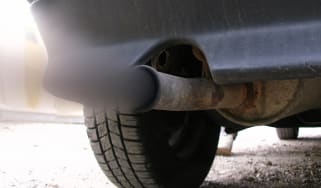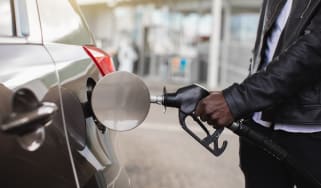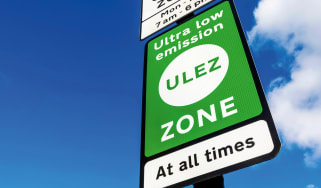Euro 6 emissions standards: what do they mean for you?
Since their introduction in 2015, Euro 6 standards for exhaust emissions have had a big impact but what are they?
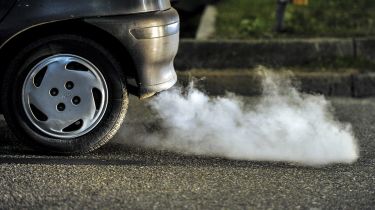
With environmental pollution being a significant and growing concern across the planet, governments and car manufacturers are actively striving to reduce harmful emissions from combustion-powered cars. The European emission standards were introduced in 1993 to help towards the measuring and control of the environmental impact of new cars. At present, if a new car is to go on sale in Europe, it must meet the latest European emissions standard - known as Euro 6.
The 6 in Euro 6 represents the level of the strictness of testing and legislation that was applied to a vehicle. Whenever the emissions standard is reviewed and changed, the number increases - starting with Euro 1 in 1993, up to the current Euro 6 in 2015. It’s likely that the next Euro 7 emissions standard will come into force in July 2025.
Euro 6 and the emissions standards before it have played a major role in the shape of the car market by pushing car makers to offer cleaner cars and Governments to build car taxation systems around the standards. Even the tests themselves have come under scrutiny and been updated to offer a better picture of real-world emissions levels.
This guide rounds up the latest Euro 6 emissions standards and testing procedures, and we also explain the new legislation to improve emissions testing regulation and help avoid car makers short-cutting the tests.
How are new cars tested for emissions?
To make emissions tests more reflective of real-world driving, new WLTP (World harmonised Light vehicle Testing Protocol) tests were introduced in September 2018 to replace the old NEDC tests.
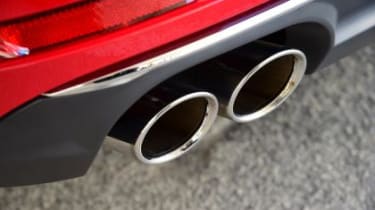
All new cars are now sold after undergoing WLTP testing to more closely reflect fuel economy and emissions when actually driving, and include an additional real-world driving emissions (RDE) test to detect regulated pollutant emissions. The RDE is carried out on the road instead of the lab to ensure accuracy, using a portable emissions measurement system to record emissions.
The procedure is conducted in a controlled environment, and tests are witnessed by Government agencies. The ambient temperature, vehicle fluid levels and tyre pressures are all measured to maintain consistency between tests of different models, and this ensures the test is as accurate as possible. That means all cars are tested in the same conditions and means that the emissions figures recorded for them can be compared directly to each other when you're comparing specs between cars.
The cars that are chosen for the test are randomly selected from the production lines by the legislative body. That means the manufacturer can't supply a specially 'tweaked' model that could be optimised to produce favourable results.
However, as Volkswagen proved, car makers can still bypass these regulations without doctoring a test model.
What is Euro 6?
The pollutants that the European emission standards aim to reduce include nitrogen oxide (NOx), carbon monoxide (CO), hydrocarbons (THC and NMHC) and particulate matter (PM), which is basically soot from diesel cars. The knock-on effect of reducing these can also mean improved fuel economy and lower CO2 emissions.
NOx is a harmful pollutant that is often blamed for damaging the environment, and has also been proven to have serious health implications. Particulate matter, meanwhile, is a local pollutant that has also been linked to health and respiratory problems. A firm date for the introduction of the Euro 7 standards has yet to be set, but it is believed that this will be the final emission standard to be introduced before the sale of new combustion-powered cars is phased out completely. We would expect to see them in force by 2025.

Euro 6 regulations set different emissions standards for petrol and diesel cars, in order to reflect the different kinds of pollutants the two fuels produce. For diesels, the permitted level of NOx emitted has dramatically dropped to a maximum of 80mg/km, compared to the 180mg/km level that was required for cars that met the previous Euro 5 emissions standard. In contrast, the NOx limit for petrol cars remained unchanged from Euro 5, as it was already low at 60mg/km.
Diesel cars and the Euro 6 emissions standards
Older diesel cars that produce higher levels of NOx and particulate matter have been under fire from a number of environmental groups for a few years now. The UK Government has been blamed for previously enticing consumers into diesel cars, which are considered to be more environmentally harmful, with past road tax and company car tax structures that benefit low CO2 emissions.
Changes to the road tax structure in 2017 mean that hybrid and fully-electric cars now benefit from emission related discounts but diesels do not. Also, diesel cars that do not meet RDE2 standards incur an additional levy. The automotive industry and the Society of Motor Manufacturers and Traders (SMMT) that represents it have come out in defence of diesel cars and started a campaign to raise awareness of the clean diesel technology fitted to Euro 6-compliant models.
The SMMT is attempting to ensure all diesel cars aren't tarred with the same brush, and is drawing a line between older diesels and the new generation of clean diesel models. The concern is that confusion could lead buyers to snub the newer Euro 6 diesels when they deliver similar pollution reduction as the petrol alternatives.
Euro 6 and ULEZ ultra low emissions zones
The longer-term future for diesel cars looks a little more uncertain for the reasons touched on above. Even though much of the criticism of diesel cars is misplaced, there are significant financial penalties for owners of diesel cars and these could increase in future.
The ULEZ (Ultra Low Emissions Zone) in London is a levy for drivers of the highest polluting vehicles in the capital. It originaly covered the same area as London’s Congestion Charge Zone but expanded to cover all areas inside the North and South Circular from October 2021 and will cover all London boroughs from August 29 2023.

The vehicles that are affected by ULEZ are generally pre-Euro 6 diesels (ones built before around 2016) and pre-Euro 4 petrols (built before around 2006). The standard daily ULEZ rate is £12.50 - coupled with the also compulsory Congestion Charge of £15, the total cost of some vehicles to enter the centre of London will be up to £27.50.
Some councils have also started to charge owners of diesel cars more for parking permits. Islington council in London introduced a surcharge of £120 from April 2019 for anyone with a diesel car (excluding residents with Blue Badges, and residents who depend on their vehicle for employment purposes). It claims that the reasoning behind this is "to protect residents from the health risks associated with diesel emissions".
Euro 1 to Euro 6: European emissions legislation timeline
European emission standards first came into force in 1993, with Euro 1 standards becoming law. This initial standard ensured that diesel cars emitted no more than 780mg/km of nitrogen oxide, while the maximum for petrol engines was 490mg/km.
This moved on to Euro 2 in 1997 that dropped diesel NOx to 730mg/km and Euro 3 standards followed in 2001 lowering the diesel NOx limit to 500mg/km. By 2006, Euro 4 emissions were in place reducing the maximum NOx in diesels to 250mg/km and Euro 5 reduced it further to 180mg/km in 2011.
Throughout this time, the maximum amount of NOx emitted by diesel cars has been well behind that of petrol models. Under Euro 6 standards, however, the maximum level for NOx in diesel models is 80mg/km, compared to 60mg/km in petrol cars. The Euro 7 regulations will fix the limit at 60mg/km for all new cars from July 2025.
Euro emissions standards checker
The tables below shows the Euro emissions standards for diesel and petrol cars. The dates when the standards were introduced can give a good indication of the emissions standard that your diesel car conforms to. If your car was first registered after the date when the Euro standard came into force then there's a good chance it conforms to that standard. However, you should always check with your car's manufacturer if you are in any doubt because models that conform to the standards are often sold before the date of its introduction and models that don't meet the standard are sometimes registered after that date.
Euro emissions standards: diesel
| Euro standard | Date | CO | NOx | PM |
| Euro 1 | July 1993 | 2.72 | 0.97 | 0.14 |
| Euro 2 | January 1997 | 1 | 0.7 | 0.08 |
| Euro 3 | January 2001 | 0.64 | 0.5 | 0.05 |
| Euro 4 | January 2006 | 0.5 | 0.25 | 0.025 |
| Euro 5a | September 2011 | 0.5 | 0.18 | 0.005 |
| Euro 6 | September 2015 | 0.5 | 0.08 | 0.005 |
Euro emissions standards: petrol
| Euro standard | Date | CO | NOx | PM |
| Euro 1 | January 1993 | 2.72 | 0.97 | n/a |
| Euro 2 | January 1997 | 2.2 | 0.5 | n/a |
| Euro 3 | January 2001 | 2.3 | 0.15 | n/a |
| Euro 4 | January 2006 | 1 | 0.08 | n/a |
| Euro 5 | September 2011 | 1 | 0.06 | 0.005 |
| Euro 6 | September 2015 | 1 | 0.06 | 0.005 |
Euro emissions standards for vans
Below are the Euro emissions standards for diesel vans. Again, the dates are a guide to the standard your van will conform to when compared with the vehicle's first registration date, but check with the manufacturer to be sure.
| Emissions standard | Date | CO | NoX | PM |
| Euro 1 | October 1994 | 2.72 | n/a | 0.14 |
| Euro 2 | October 1997 | 1 | n/a | 0.08 |
| Euro 3 | January 2001 | 0.64 | 0.5 | 0.05 |
| Euro 4 | January 2006 | 0.5 | 0.25 | 0.025 |
| Euro 5a | January 2011 | 0.5 | 0.18 | 0.005 |
| Euro 5b | January 2013 | 0.5 | 0.18 | 0.0045 |
| Euro 6b | September 2015 | 0.5 | 0.08 | 0.0045 |
| Euro 6c | September 2018 | 0.5 | 0.08 | 0.0045 |
| Euro 6d-Temp | September 2019 | 0.5 | 0.08 | 0.0045 |
| Euro 6d | January 2021 | 0.5 | 0.08 | 0.0045 |
If you want to stay a step ahead of increasing emissions regulations, take a look at our list of the best electric cars to buy.




